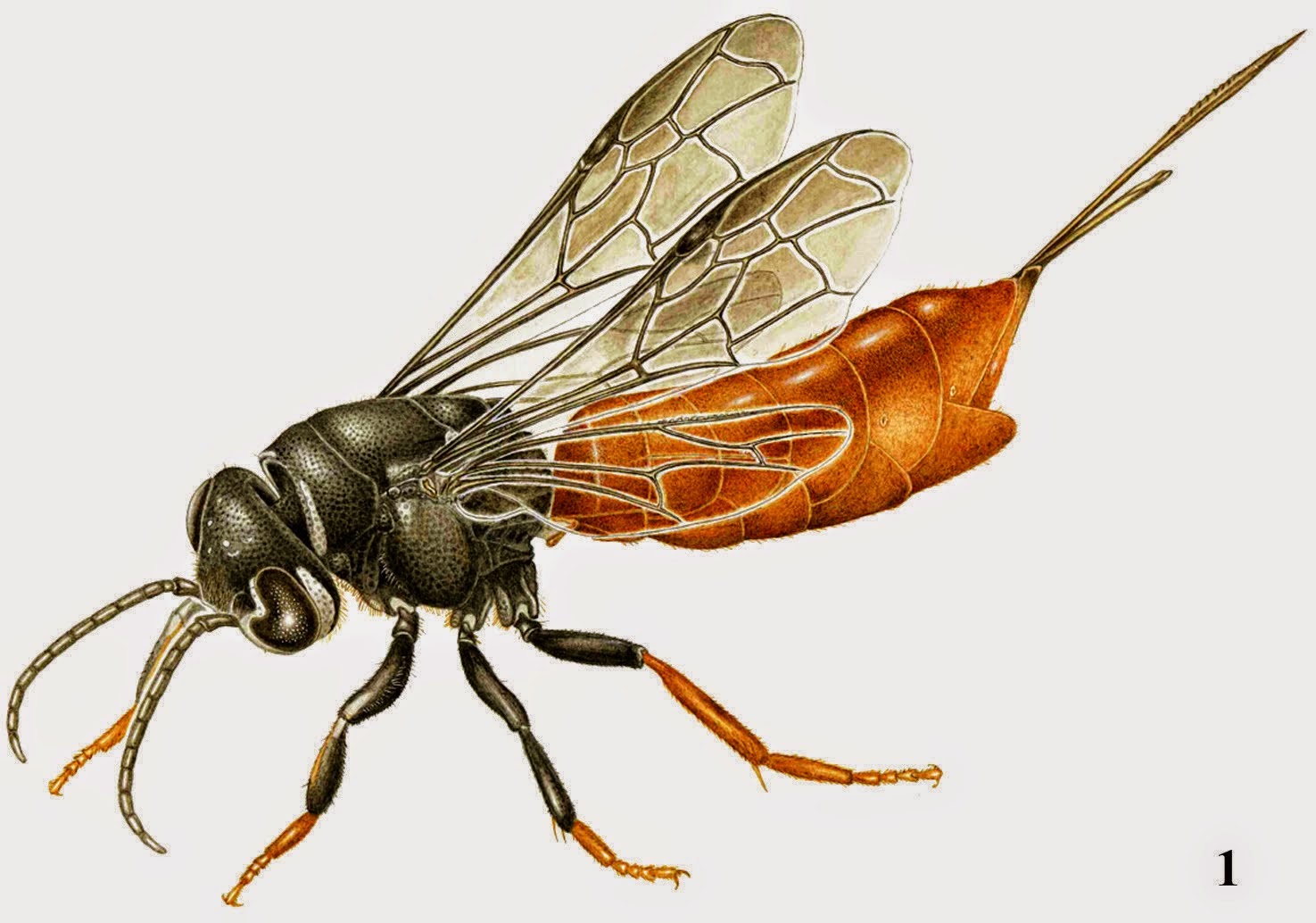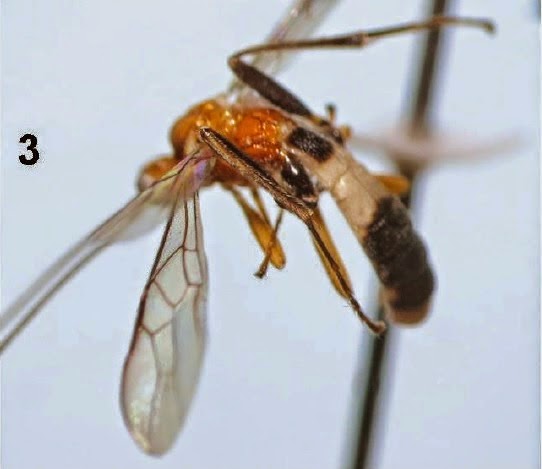Ironwood Trees of the genus Casuarina
are native to Australia, Southeast Asia, South America and the islands of the
western Pacific. They are widely grown for their timber, as well as for
windbreaks and for their ability to stabilize soils in erosion-prone areas.
However in some places where they have been introduced they are considered to
be invasive pests, which outcompete native plants and modify their environment
in unwanted ways. Thus any pest or pathogen species which affects Ironwoods is
of interest, both due to the harm it can cause to a valuable commercial
species, and for its potential to act as a biological control on a harmful
invasive one.
In a paper published in the journal Zootaxa on 23 April 2014, NicoleFisher of the Australian National Insect Collection at CSIRO Ecosystem Sciences,
Aubrey Moore of the Western Pacific Tropical Research Center of the Universityof Guam, Bradley Brown and Matthew Purcell of the Australian BiologicalControl Laboratory at CSIRO Ecosystem Sciences, Gary Taylor of the AustralianCentre for Evolutionary Biology and Biodiversity and School of Earth andEnvironmental Sciences at The University of Adelaide and John La Salle of the Australian
National Insect Collection and Atlas of Living Australia at CSIRO Ecosystem
Sciences describe two species of Gall Wasps infesting Ironwood Trees from
Micronesia and Australia. Both are placed in the genus Selitrichodes.
The first new species is named Selitrichodes casuarinae,
which derives from Casuarina. The
species was discovered in Guam, where Ironwoods are widely planted as
windbreaks, shade trees and erosion controls, but where they have begun to
decline and die. Selitrichodes casuarinae
has subsequently also been discovered on Rota and Palau, however it is presumed
to be native to Australia, as this is the source of the Ironwood trees grown on
these islands; the Australian distribution of the Wasp is unknown.
Adult Selitrichodes casuarinaeon
Causarina stem. Aubrey Moore in Fisher
et al. (2014).
Selitrichodes casuarinae is a small yellow and brown Wasp. The males reach 0.75-1.25 mm in
length, the females are slightly smaller, reaching 0.70-1.20 mm. The Wasps
cause galls (tumourus growths in which the eggs are laid and where the larval
Wasps grow) on the tips of branchlets of Casuarinae quisetifolia.
The branchets with galls are notably stunted and have a dry biomass reduced by
about 35%.
Stunting caused by Selitrichodes casuarinae. Aubrey
Moore in Fisher et al. (2014).
The second new species is named Selitrichodes utilis,
meaning useful or beneficial; the species is being investigated for use as a
biological control in parts of North America where Ironwoods are considered an
invasive pest. It has been found in Queensland and New South Wales, though to
date all specimens collected have been females.
Selitrichodes utilis, female specimen in lateral view. Nicole Fisher in Fisher et al. (2014).
Selitrichode sutilis is dark brown or metallic green in colour and reaches 0.85-1.55 mm
in length. It forms galls on the stem tips of Casuarina glauca.
Leaf bulbgalls on colony plant, Casuarina glauca. Bradley Brown in Fisher et al. (2014).
See also…
Sapygid Wasps are a widespread in northern Eurasia and North
America, but considered rare elsewhere and are unknown in Australia, although
the group are not well studied, and their distribution may be wider than...
The Betylobraconinae are a group of Braconid Wasps (small parasitoid Wasps that lack stings and which will lay more than one egg on a host Insect) found in Australia, New Guinea and New Caledonia. They are abundant within their range, but their biology is poorly...
Braconid Wasps are small parasitoid wasps (Wasps whose larvae grow inside the bodies of a living animal host) targeting a variety of Insect and Spider species. They are unusual in that they will lay multiple eggs within the same host (most parasitoid Wasps lay a single egg on each host), thereby allowing multiple larvae to...
The Betylobraconinae are a group of Braconid Wasps (small parasitoid Wasps that lack stings and which will lay more than one egg on a host Insect) found in Australia, New Guinea and New Caledonia. They are abundant within their range, but their biology is poorly...
Braconid Wasps are small parasitoid wasps (Wasps whose larvae grow inside the bodies of a living animal host) targeting a variety of Insect and Spider species. They are unusual in that they will lay multiple eggs within the same host (most parasitoid Wasps lay a single egg on each host), thereby allowing multiple larvae to...
Follow Sciency Thoughts on Facebook.







